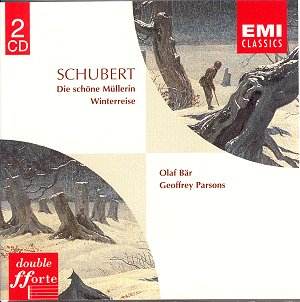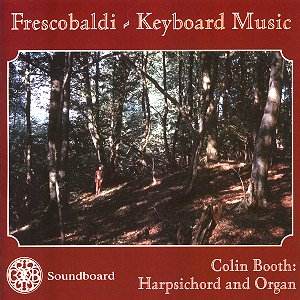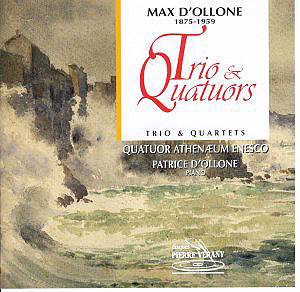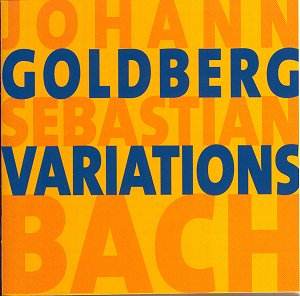 Composer: Franz Schubert
Composer: Franz Schubert
Works: Die schöne Müllerin, Winterreise
Performers: Olaf Bär, baritone; Geoffrey Parsons, piano
Recording: June 1986, Lukaskirche, Dresden; December 1988, Abbey Road, London
Label: EMI
Schubert’s song cycles, particularly Die schöne Müllerin and Winterreise, stand as monumental achievements in the lieder repertoire, encapsulating the emotional breadth and existential depth of the human condition. Written in 1823 and 1827, respectively, these works reflect Schubert’s mastery in melding poetry and music, drawing from the rich well of German Romanticism. They serve not only as narrative journeys but also as profound explorations of love, loss, and the passage of time, making them perennial favorites among performers and audiences alike.
Olaf Bär’s interpretations of these iconic cycles, newly re-released by EMI, exhibit a refreshing blend of youthful exuberance and mature introspection. In Die schöne Müllerin, Bär’s light, agile baritone captures the naïveté and earnestness of the miller’s love, particularly evident in “Das Wandern,” where his phrasing and vocal color evoke the simplicity of the pastoral setting. His ability to shift seamlessly between lightness and gravity is particularly moving in “Am Feierabend,” where he deftly navigates the delicate balance between contemplation and joy. The culmination in “Des Baches Wiegenlied” is a testament to Bär’s interpretative depth; his clear, bright timbre, coupled with Parsons’ sensitive pianism, encapsulates the bittersweet essence of longing and homecoming.
Transitioning into Winterreise, Bär adopts a markedly different vocal persona, embodying the angst and desolation that permeates the cycle. His voice takes on darker, richer hues, allowing for a broader emotional palette that resonates poignantly in tracks such as “Gute Nacht.” Here, Bär’s nuanced handling of the key shifts from D minor to D major reveals the internal conflict of the text, showcasing his technical prowess and interpretative insight. Each song is infused with a distinct character, as evidenced in “Die Post,” where his playful delivery contrasts sharply with the poignant gravitas of “Der stürmische Morgen.”
The recording quality of this EMI release is striking, capturing the intimate interplay between voice and piano with clarity and warmth. Parsons’ accompaniment is not merely supportive but actively engages with Bär’s interpretations, creating a seamless dialogue throughout the cycles. The engineering effectively balances the two performers, allowing Bär’s voice to soar above the piano’s texture while still retaining the richness of Parsons’ playing. This synergy is particularly effective in the climactic moments of “Der Leiermann,” where the emotional weight of the cycle culminates in a hauntingly beautiful display of despair and resignation.
Bär’s performances, while distinct, invite comparison with other renowned interpretations, such as those by Dietrich Fischer-Dieskau and Ian Bostridge. While Bär may lack Fischer-Dieskau’s intense gravitas, his lighter approach offers a refreshing alternative that aligns with the youthful spirit of Schubert’s earlier works. The contrast in interpretative choices serves to highlight the multifaceted nature of these cycles, affirming their continued relevance and adaptability across different vocal interpretations.
This re-release of Bär’s recordings stands as an essential contribution to the Schubert discography. His interpretative choices, combined with Parsons’ exquisite playing and the strong production values of EMI, create a captivating listening experience that merits attention from both aficionados and newcomers alike. Bär’s artistry reveals a singer of considerable talent, whose interpretations of these iconic works deserve to be recognized as significant in the modern lieder landscape.



